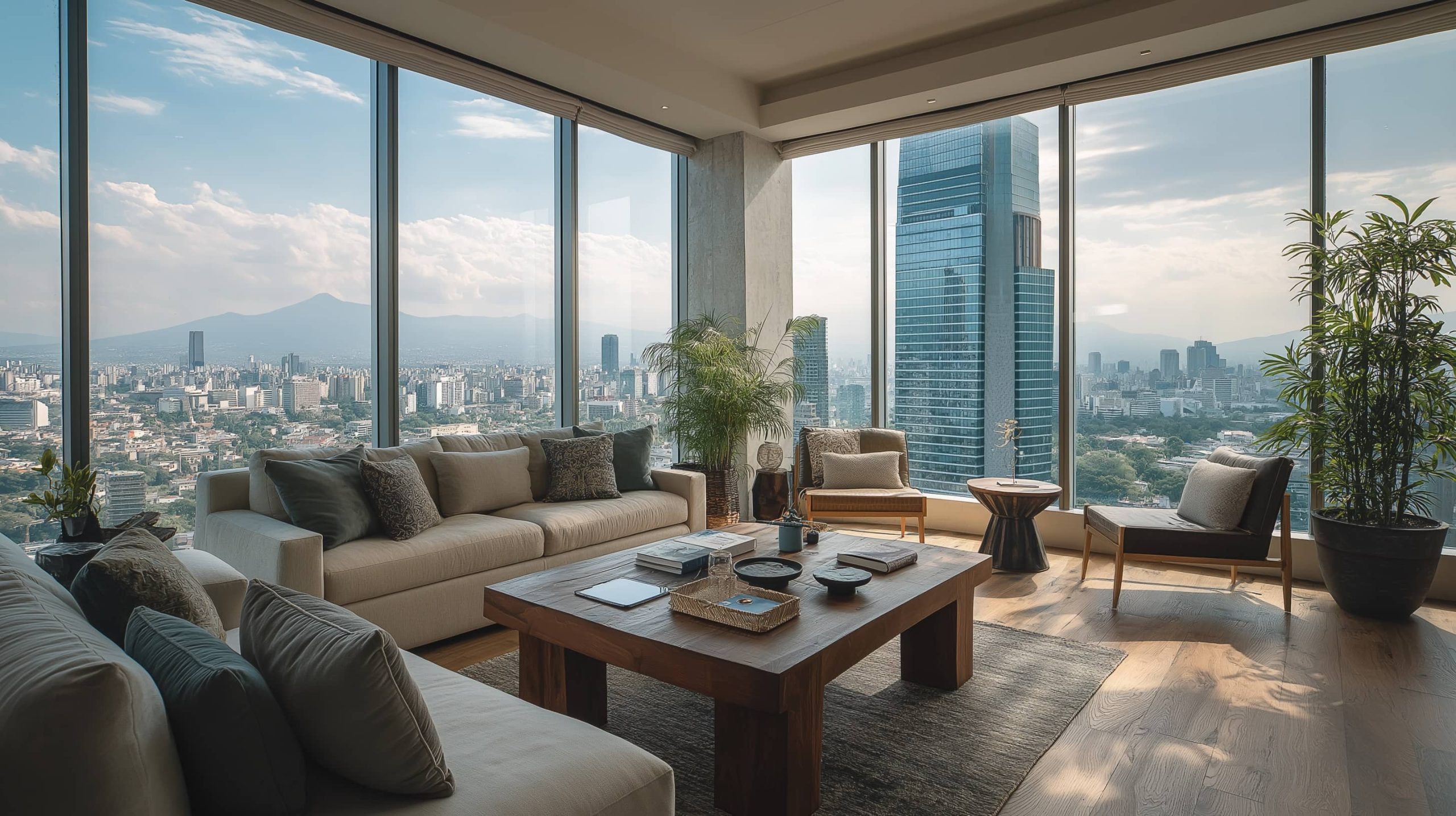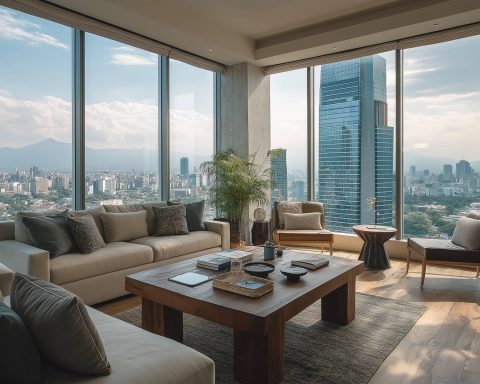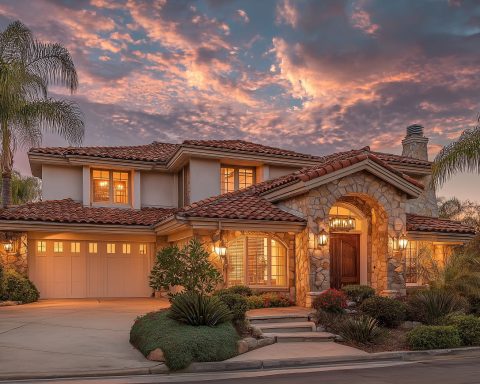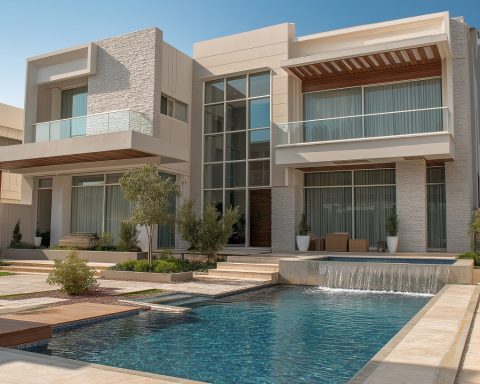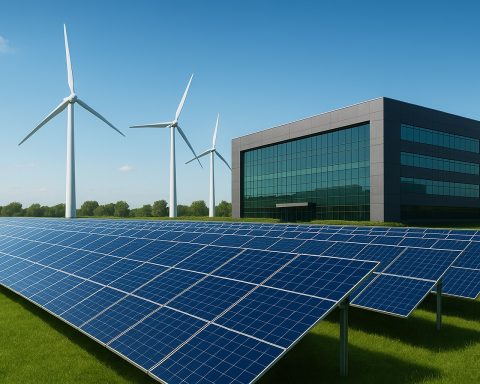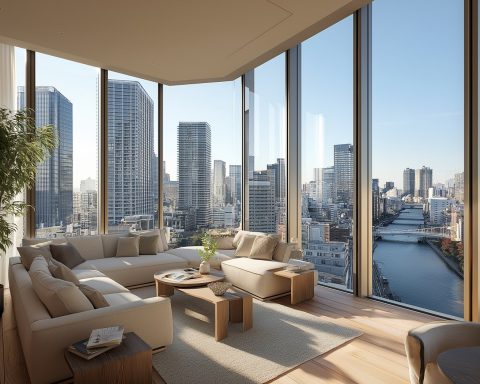Mexico City’s real estate market in 2025 reflects a dynamic mix of robust demand and cautious optimism in both residential and commercial sectors. As one of the largest urban centers in the world (over 9 million residents in the city proper), Mexico City continues to attract investors and new residents, driving property values upward globalpropertyguide.com. However, affordability and market imbalances pose challenges. This report provides a comprehensive overview of current trends in residential and commercial real estate, covering buying, renting, and investment patterns, recent data and forecasts, key neighborhood hotspots, and the macroeconomic and regulatory factors shaping the market’s trajectory.
Residential Real Estate Market in Mexico City
Price Growth and Investment Trends
Residential property values in Mexico City have seen significant appreciation over the past several years. Since 2020, home prices in prime areas have surged by roughly 30%, far outpacing inflation and wage growth thelatinvestor.com. Some emerging districts have experienced even more dramatic rises – for instance, the traditionally overlooked Venustiano Carranza borough saw prices skyrocket 55% in five years amid rapid gentrification and infrastructure upgrades thelatinvestor.com. Luxury enclaves like Polanco, Roma, and Santa Fe – already among the most expensive neighborhoods – have climbed another ~30% in value since 2020, with entry-level properties in these areas now often exceeding MXN 5 million (roughly USD 280,000) thelatinvestor.com.
Recent data confirm the continuing upward trend. By Q4 2024, average asking prices in Mexico City reached about MXN 50,116 per m² (~USD $2,470 per m²), an 8.1% year-on-year increase globalpropertyguide.com. New development units averaged higher (around MXN 60,839 per m²), while second-hand properties averaged ~MXN 44,400 per m² globalpropertyguide.com. Industry analysts expect prices to keep rising through 2025, though at a somewhat moderated pace. Forecasts project 3–7% appreciation by end of 2025, a slight cooling from the ~8% gains seen in 2024 but still well above inflation thelatinvestor.com. Over the longer term, Mexico’s overall real estate market is projected to grow around 4–5% annually through 2028 thelatinvestor.com, with Mexico City as a key driver.
Several factors underpin these gains. Housing supply remains constrained – bureaucratic hurdles and high construction costs limit new development, especially in central districts. Estimates suggest the capital needs roughly 500,000 new homes to meet demand, yet current government plans would add only ~26,000 affordable units over five years thelatinvestor.com. This chronic undersupply, against a backdrop of steady demand, has put persistent upward pressure on prices thelatinvestor.com. Meanwhile, demographics and lifestyle shifts are boosting housing demand: the city’s population growth, more single-person households, and rising life expectancy all mean more housing units needed. Additionally, an influx of foreign buyers and expatriates – including digital nomads and remote workers from the U.S., Canada, and Europe – has added competition for properties in desirable neighborhoods thelatinvestor.com thelatinvestor.com. Favorable currency dynamics (a strong USD relative to the peso) make Mexico City real estate appear attractively priced to these international buyers; for example, a USD $500,000 budget (~MXN 10 million) can secure high-end properties in top districts thelatinvestor.com. In fact, foreign purchasers (especially Americans) have become significant players in the high-end market, accounting for an estimated ~40% of luxury home sales in 2022 and potentially rising to 60% in coming years thelatinvestor.com thelatinvestor.com. This influx of foreign capital has particularly targeted upscale areas and trophy properties, further lifting prices in those segments.
Investor interest in residential segments remains strong across the spectrum. The fastest price growth lately has been in the “Popular” affordable housing segment (often government-subsidized), which jumped +12.06% year-on-year by late 2024 globalpropertyguide.com. This outpaced even the top-tier luxury segment (+7.01% YoY) globalpropertyguide.com, indicating rising demand for middle-class housing. Investors are also keen on properties offering post-pandemic lifestyle features: homes with outdoor spaces (gardens, terraces) now command a 10–15% premium, as buyers value open-air amenities thelatinvestor.com. Other niche trends include tech-enabled “smart” apartments (with integrated high-speed internet and home office spaces) that attract young professionals thelatinvestor.com, and sustainable “green” buildings – nearly 30% of new developments now incorporate eco-friendly features like solar panels and energy-efficient systems thelatinvestor.com, which appeal to environmentally conscious buyers.
Notably, rental yields in Mexico City’s residential market are relatively attractive by global standards, supporting investment interest. In trendy centrally located districts such as Roma and Condesa, gross rental yields have been measured around 5.7%–6.7% in early 2024 thelatinvestor.com, thanks to high rental demand. Citywide, a premium neighborhood like Polanco offers an average yield on long-term rentals in the mid-5% range thelatinvestor.com. These solid yields, combined with expectations of capital appreciation, have kept both domestic and foreign investors active in purchasing apartments for rental income.
Rental Market Trends and New Regulations
Mexico City’s rental market is booming, fueled by a wave of young professionals, students, and expatriates who prefer to rent in the urban core. The arrival of more multinational companies and foreign talent has especially increased demand for rentals. In 2024, international firms announced plans to invest over $39 billion USD into Mexico (especially in manufacturing and services), creating jobs and attracting expats to the capital thelatinvestor.com. Many Americans and Europeans – including remote digital nomads – have relocated to Mexico City for its vibrant lifestyle and lower cost of living, driving up occupancy in rental units. Popular expat enclaves like Colonia Roma are seeing record-high rental occupancies, with the influx of foreign renters pushing rents upward thelatinvestor.com. Landlords in areas favored by expatriates (e.g. Roma, Condesa, Polanco, and San Miguel Chapultepec) report strong demand and the ability to charge a premium for well-located, furnished units thelatinvestor.com.
Overall, rents have been on the rise. A study by a proptech firm found that average rental prices in Mexico City increased about 3.8% in 2023 and 4.1% in 2024, roughly tracking inflation nearshoreamericas.com. However, these moderate averages mask the much sharper rent spikes in trendy central neighborhoods that have drawn an influx of higher-income newcomers in recent years. The surge of short-term rentals (Airbnb units catering to foreigners) also reduced long-term housing supply in some districts, contributing to rent hikes and local affordability concerns.
In response to an affordability crunch – which was pushing many locals to the urban outskirts – authorities implemented new rent control measures in late 2024. The Mexico City legislature approved its strongest rent control law in decades, capping residential rent increases to inflation (up to 10% per year) nearshoreamericas.com. Landlords are now limited in how much they can raise rent upon lease renewal, tying any increase to the bi-monthly inflation rate published by the central bank nearshoreamericas.com. Additionally, a digital registry of lease contracts is being introduced, requiring landlords to register new rental agreements with city authorities nearshoreamericas.com. These measures aim to increase transparency and temper runaway rents. City officials have also voiced commitment to expanding affordable rental housing (including public housing programs) so that young residents are “not pushed to the outskirts” of the city nearshoreamericas.com.
Another major regulatory change targets the short-term rental market. In an effort to curb “digital gentrification” from platforms like Airbnb, Mexico City passed what’s informally called the “Airbnb law” in late 2024. Short-term rentals are now limited to 180 days per year – effectively, a property can only be rented out half the year on home-sharing platforms nearshoreamericas.com. By capping the days (approximately 6 months maximum), the city aims to disincentivize investors from converting too many long-term homes into year-round vacation rentals. These rules, alongside registration requirements for hosts, intend to protect local housing supply and stabilize rents. Early indications suggest the regulations have begun to slow the growth of full-time Airbnb listings, potentially easing pressure on popular neighborhoods.
Despite these interventions, rental demand remains exceptionally high relative to supply. The housing affordability challenge is pushing innovation in the rental sector. One notable trend is the rise of co-living spaces – furnished, communal living arrangements rented by the room. Co-living has grown about 20% in demand in recent years as young professionals seek more affordable options in prime areas thelatinvestor.com. With average monthly rents for a basic one-bedroom apartment in the city center now exceeding USD $1,000 (up from ~$880 in early 2020) thelatinvestor.com, many Millennials and Gen-Z renters find relief in co-living’s lower costs. These setups also cater to the desire for flexibility and community, offering shared amenities and social events. As housing costs continue to climb, co-living is expected to gain further traction as a practical alternative for renters seeking to live in central Mexico City without breaking the bank thelatinvestor.com thelatinvestor.com.
Key Neighborhoods and Hotspots
Mexico City’s vast urban expanse encompasses a diverse range of neighborhoods (colonias), each with distinct real estate characteristics. In 2025, certain areas stand out for their high activity and investment potential:
- Polanco – Long established as the city’s premier luxury district, Polanco commands some of the highest prices in Latin America. Upscale apartments here average USD $4,000–$5,500 per m² (approximately MXN 80,000–110,000 per m²) thelatinvestor.com thelatinvestor.com, and exclusive pockets near Chapultepec Park top MXN 100,000 per m² (over $5,000/m²) globalpropertyguide.com. Polanco remains a magnet for wealthy domestic buyers and foreign investors alike, thanks to its high-end retail, dining, and corporate offices. It also leads the city in office inventory (about 20% of Class A space is in Polanco) and has seen robust leasing activity in that segment mexicobusiness.news mexicobusiness.news. Investors favor Polanco for its long-term value – properties here offer ~5–6% rental yields thelatinvestor.com and tend to appreciate steadily due to limited supply and prestige.
- Roma & Condesa – These side-by-side central colonias have boomed in popularity for their historic charm, cultural amenities, and vibrant street life. Roma and Condesa have become hotspots for expatriates and digital nomads, which in turn is driving up real estate values. Property prices in these areas have notably risen in recent years, supported by their trendy reputation. Apart from capital appreciation, landlords enjoy above-average rental returns here: recent yields in Roma/Condesa have been about 5.7%–6.7% thelatinvestor.com, reflecting strong rental demand from young professionals and foreigners. The neighborhoods’ cafes, parks, and nightlife – showcased by events like the Corredor Cultural Roma-Condesa festival – continue to draw new residents thelatinvestor.com. With hundreds of new businesses and community developments launched post-pandemic, Roma and Condesa are expected to remain on the rise for both lifestyle and investment appeal thelatinvestor.com thelatinvestor.com.
- Santa Fe – A modern district on the western edge of the city, Santa Fe is known for its concentration of corporate office towers, luxury condos, and a large expat population. Developed largely in the 1990s–2000s on former ranch land, Santa Fe now hosts multinational headquarters, an international university, and high-end shopping malls. Residential prices here are comparable to Polanco in the upscale segment (also topping MXN 5 million for many units thelatinvestor.com). Santa Fe’s skyline continues to grow, though it currently has one of the highest office vacancy levels in the city (as much as 25–26% of vacant office space is concentrated in Santa Fe) mexicobusiness.news mexicobusiness.news. Still, ongoing infrastructure improvements – including a new commuter rail link (see Infrastructure section) – aim to better connect Santa Fe to the rest of the city, which could bolster its attractiveness. For investors, Santa Fe offers spacious, newer properties and remains a hub for affluent renters (many foreign executives choose Santa Fe’s gated high-rises).
- Lomas de Chapultepec & San Miguel Chapultepec – Adjacent to Polanco and Chapultepec Park, these are traditional upscale residential zones featuring large single-family homes and low-density luxury apartments. Lomas de Chapultepec in particular is an exclusive enclave (home to many billionaires and diplomats) where mansions routinely sell for multi-million dollar prices thelatinvestor.com. With limited new construction and a prestigious reputation, Lomas remains a stable investment area for the ultra-wealthy. Nearby San Miguel Chapultepec, though smaller, has become a trendy upscale pocket as well, noted as a hotspot for expats seeking a mix of modern condos and leafy surroundings thelatinvestor.com.
- Emerging Peripheral Districts – As central neighborhoods become prohibitively expensive, attention is turning to improving areas on the city’s fringes. Enhanced public transit is a catalyst here. For example, the introduction of new Cablebús lines (aerial cable car transit) in outer boroughs like Iztapalapa and Gustavo A. Madero has dramatically cut commute times (from 1.5 hours to mere minutes in some cases) thelatinvestor.com thelatinvestor.com. The Cablebús Line 2 in Iztapalapa – the longest urban cable car route in Latin America – now carries ~70,000–80,000 riders daily thelatinvestor.com, spurring real estate interest along its route. Once-overlooked peripheral neighborhoods connected by these transit improvements are seeing property values climb and new housing developments spring up thelatinvestor.com thelatinvestor.com. Neighborhoods in the far north and east of the city, which offer more accessible pricing, are thus increasingly attractive to middle-class buyers and young families willing to trade a longer commute (now shortened by transit) for affordable homes.
- Estado de México suburbs – Beyond the capital’s borders, the greater Mexico City metropolitan area (in the State of Mexico) provides affordable inventory for those priced out of the city. Areas in Estado de México can have prices as low as USD $1,000 per m² (~MXN 20,000/m²) for mid-range housing thelatinvestor.com, which is a fraction of central city costs. These suburbs (such as Naucalpan, Tlalnepantla, Ecatepec, etc.) see steady demand, though investment potential varies. Some are primarily bedroom communities, while others benefit from industrial growth (for example, Cuautitlán Izcalli and Toluca are seeing logistics and manufacturing expansion tied to nearshoring). Key upcoming infrastructure (like the new interurban train line) is set to improve connectivity for certain suburbs, possibly lifting their real estate prospects (discussed further below).
Commercial Real Estate Market in Mexico City
Office Sector Conditions
Mexico City boasts the largest office market in the country – about 7.4 million m² of Class A/A+ office inventory as of late 2024 mexicobusiness.news – but it has been grappling with high vacancy and shifting demand in the wake of the pandemic and evolving work patterns. After a pandemic-era slump, 2024 showed some signs of recovery: net absorption of office space was positive, and by Q3 2024 the vacancy rate had improved to 21.6%, down from a peak of ~23.7% a year prior mexicobusiness.news mexicobusiness.news. Corporate leasing picked up in 2024, particularly driven by the IT and financial services sectors which together accounted for nearly 60% of leased space in Q3 2024 mexicobusiness.news. Prime submarkets like Lomas-Palmas, Polanco, and Insurgentes led that quarter’s leasing activity mexicobusiness.news, indicating that well-located, quality spaces still attract tenants. No new office developments were initiated in late 2024, which helped stabilize supply; developers have largely paused new construction until excess vacancies are absorbed mexicobusiness.news mexicobusiness.news.
However, entering 2025 the office sector hit headwinds from macroeconomic uncertainty. In the first two months of 2025, office leasing activity in Mexico (particularly new leases) dropped sharply – down 27% nationally compared to the same period in 2024 riotimesonline.com riotimesonline.com. Mexico City, which accounts for roughly 64% of the country’s office demand, was hardest hit. Data from real estate consultancy Solili showed that office occupancy in the capital plunged by 40% year-on-year in Jan–Feb 2025 riotimesonline.com. In other words, many companies gave up space or delayed expansions, causing net occupancy to fall significantly versus the previous year. About 56,000 m² of office space was vacated across Mexico in early 2025, and fully 80% of that vacant area was in Mexico City riotimesonline.com. This surge in move-outs pushed the city’s vacancy rate back up toward the high-10s (%) by 1Q 2025. Estimates put vacancy around 19–20% in early 2025, which, while slightly better than 2023 highs, is still elevated mexicobusiness.news solili.mx. Average asking rents for prime office space have held around US ~$20 per m² per month in the capital as of early 2025 mexicobusiness.news, with some submarkets (e.g. Polanco, Reforma) achieving higher rates in USD terms given their prestige.
The causes of this office slowdown are both cyclical and structural. Macroeconomic uncertainty – particularly trade tensions with the U.S. – made firms cautious. In early 2025, the U.S. imposed new tariffs on certain Mexican goods, dampening business confidence riotimesonline.com. Many companies adopted a “wait-and-see” stance, delaying lease commitments until there’s clarity on trade policy and the economy riotimesonline.com. At the same time, structural shifts in work (remote and hybrid work trends since COVID-19) mean some corporations are downsizing space needs or opting for flexible coworking arrangements instead of long-term leases. The combined effect has been reduced demand for traditional office space in the short term. Consequently, new office construction is at a virtual standstill – by early 2025, only 1,000 m² of new office projects were under construction in Mexico City (virtually negligible addition) riotimesonline.com. Developers are refraining from breaking ground on any major office towers until vacancy tightens and demand clearly rebounds riotimesonline.com.
Within the city, vacancy is unevenly distributed. Modern decentralized corporate hubs like Santa Fe have a large share of the empty space (roughly a quarter of all vacant offices) mexicobusiness.news, as some firms there have consolidated or subleased space. Polanco and the Insurgentes corridor also have significant vacant inventory (each comprising around 13–17% of the city’s available space) mexicobusiness.news, partly due to recent construction additions and some tenants moving to quality-over-quantity footprints. In contrast, the Reforma/Centro area – home to many headquarters along Paseo de la Reforma – has seen steadier occupancy, and submarkets like Lomas Palmas (a small but high-end office zone) are faring relatively well with new leases mexicobusiness.news.
Despite the challenges, there are indicators of resilience. By Q1 2025, vacancy had actually edged down to ~19.5% (the lowest since the pandemic), according to CBRE, due to some large lease deals closing and no new supply flooding the market mexicobusiness.news. And reports in Q2 2025 suggest net absorption turned positive again (+60% in 2Q25) as certain businesses took advantage of soft rents to upgrade their offices mexicobusiness.news. Monterrey and other Mexican cities even showed growth in office demand at the start of 2025 riotimesonline.com, highlighting that Mexico City’s office glut may begin to ease once economic jitters settle. Overall, the outlook for the office sector is one of cautious recovery: tenants remain price-sensitive and flexible, but with Mexico’s economy and nearshoring trend expected to create new corporate activity, analysts anticipate a gradual improvement in occupancy over the coming years (barring any major external shocks).
Retail and Industrial Sectors
Retail real estate in Mexico City has rebounded strongly from the pandemic downturn. After widespread retail closures in 2020, consumer foot traffic and tenant demand have recovered, pushing vacancy down in shopping centers. By the end of 2024, retail property occupancy citywide reached about 93.3%, which is just shy of the ~95% occupancy levels seen pre-2019 siila.com businesswire.com. In fact, one major retail landlord, FIBRA Macquarie, reported a 93.3% occupancy rate in its retail portfolio in Q4 2024, up 130 basis points year-over-year businesswire.com. Prime malls (especially “lifestyle centers” and large regional malls) are performing best, often boasting occupancy in the 93–94% range siila.com.mx. Shoppers have returned in force, and retailers that survived the pandemic have largely expanded again or been replaced by new entrants – industry analysis noted that for every 10 stores that closed permanently, about 12 new stores have opened, reflecting a net expansion in retail tenants going into 2025. Popular shopping districts (Polanco’s high street, Santa Fe’s mall district, historic Centro, etc.) are benefiting from renewed consumer spending and tourism. Rents for retail space have started to tick up modestly in top locations, and some retail REITs are seeing positive leasing spreads (rent increases on renewals) on the order of 5% or more fibramacquarie.com.
A couple of trends characterize the retail landscape: First, experiential and “lifestyle” retail is on the rise – malls with entertainment, dining, and open-air concepts are drawing higher footfall and maintaining very high occupancy (over 93%) siila.com.mx. Second, the integration of e-commerce with physical retail has pushed demand for modern logistics space (discussed below) and last-mile distribution centers around the city. While e-commerce growth initially threatened brick-and-mortar stores, many retailers have adapted by using stores as showrooms or fulfillment nodes, keeping retail vacancy low. The overall retail outlook is positive: barring any economic slowdown, consumer demand in the capital is expected to remain strong into 2026, and new retail developments are cautiously being planned in growth zones (often as part of mixed-use projects).
In the industrial and logistics sector, Mexico City is part of a broader national boom driven by nearshoring – the trend of companies moving manufacturing and supply chain operations closer to the U.S. market. Although the most dramatic industrial growth has been in northern Mexico (border cities and Monterrey, where industrial vacancies are often 1–3% bcg.com bcg.com), the capital region is also benefiting. The Mexico City metro area (including neighboring State of Mexico) is a major consumption market and distribution hub, so warehouse space is in high demand for both e-commerce and regional supply chains. By late 2024, industrial vacancies in Mexico had ticked up slightly after reaching record lows – nationwide vacancy rose for a few consecutive quarters but remained healthy at around 2–3% on average siila.com.mx blog.frontierindustrial.mx. In central Mexico (for example, the Toluca–Mexico City corridor), vacancy rates have remained tight as well, albeit with some new speculative construction coming online. Developers raced to build warehouses in 2022–2023 anticipating nearshoring demand, and by 2024 a few pockets of space opened up, but essentially the industrial market is near full occupancy.
For Mexico City specifically, much of the new industrial real estate activity is just outside city limits – in markets like Cuautitlán, Tultitlán, Tepotzotlán (together known as the “CTT” corridor), as well as Toluca and Puebla further out. Those industrial submarkets have seen large leases by logistics, retail, and manufacturing firms. Rents for modern logistics facilities have been rising due to low vacancy and high construction costs, and are expected to continue climbing gradually in 2025. One report noted that industrial rents nationwide rose by over 8% in 2024 businesswire.com. With Mexico solidifying its position as a manufacturing hub for North America, industrial real estate investment is pouring in: for example, foreign investors (including global funds and REITs) have been acquiring and developing warehouses around Mexico City to meet demand. The government and private sector are also collaborating on new industrial parks with sustainable features (supported by initiatives like a $150 million IFC loan for green industrial parks) thelatinvestor.com thelatinvestor.com, indicating confidence in long-term growth. Overall, the industrial segment in the Mexico City region is expected to remain strong through 2025 and beyond, with nearshoring and e-commerce as key drivers – albeit with the caveat that any global economic or trade disruptions (such as U.S. tariff issues) could temper the breakneck pace.
Macroeconomic and Regulatory Factors
The real estate market’s performance is closely tied to broader macroeconomic conditions. Mexico’s economy has been relatively resilient, with GDP expanding about 3% in 2022–2023 and a growing middle class contributing to housing demand. Mexico City, as the capital, enjoys a large share of national economic activity (the city’s GDP grew 2.3% YoY in early 2024 mexicobusiness.news). Key macro factors impacting the market in 2025 include:
- Interest Rates and Inflation: Mexico’s central bank (Banxico) maintained high benchmark interest rates through 2024 (in the 10–11% range) to combat inflation. While inflation has eased to more moderate levels (~4–5% in late 2024), borrowing costs for mortgages remain relatively high. Typical mortgage rates for local buyers have been around or above 10%, making financing costly and potentially dampening some homebuyer activity. (For foreign buyers, cross-border mortgage products offer ~7–9% rates in USD thelatinvestor.com, which, while higher than U.S. home loans, still attract investors betting on high appreciation thelatinvestor.com.) High interest rates also raise construction financing costs, slowing down new development. Thus, the high-rate environment has been a double-edged sword: it cools demand marginally and constrains supply expansion, but overall housing demand in Mexico City has been robust enough to sustain price growth above inflation thelatinvestor.com. If Banxico moves to cut rates in late 2025 (as some expect if inflation remains under control riotimesonline.com), it could further stimulate real estate activity by making credit more accessible.
- Economic Growth and Employment: Employment trends in Mexico City are favorable – the city’s unemployment rate was only ~2.4% at the end of 2024 assets.cushmanwakefield.com, and formal job creation has been strong, especially in services and manufacturing. A thriving job market underpins housing demand (both rental and purchase). Additionally, nearshoring-driven investments (factories, logistics centers, corporate expansions) are pumping capital into the country. Mid-2025 reports show Mexico attracting substantial foreign direct investment, with 67.6% of all real estate FDI in 2023 going to Mexico City thelatinvestor.com. These trends bolster confidence in the real estate sector’s medium-term growth.
- Currency Exchange Rates: The Mexican peso’s exchange rate affects foreign buying power. In recent years the peso has been relatively strong, but it still fluctuates in the ~17–20 MXN per USD range. A favorable exchange rate (from a U.S. or European buyer perspective) makes Mexico City property comparatively cheap. For example, luxury condos that might cost $1 million USD in the U.S. can be half that price or less in Mexico City for similar quality, attracting international buyers. Continued stability of the peso and avoidance of any major devaluation are important for maintaining foreign investment flows into real estate.
On the regulatory side, beyond the rent control and Airbnb restrictions discussed earlier, other policies and plans are influencing the market:
- Affordable Housing Initiatives: The new federal administration (which took office in late 2024) has announced an ambitious affordable housing program, aiming to build 1 million homes nationwide by 2030, with about 26,000 units slated for Mexico City thelatinvestor.com. While this is a positive step toward addressing housing shortages, analysts note it is insufficient scale for a metro of over 20 million people – it will only chip away at the deficit thelatinvestor.com. Nonetheless, if implemented, these projects (likely mid- to high-density social housing developments) could provide some relief in lower-income segments and slightly alleviate pressure in the long run. The city government is also incentivizing redevelopment of underutilized properties (for example, converting old office buildings to residential use) and fast-tracking permits for low-cost housing.
- Sustainability and Green Building Incentives: Mexico City authorities have been promoting sustainable real estate development. The Certification Program for Sustainable Buildings offers tax breaks on water, payroll, and property taxes, as well as expedited permits, for projects that meet green building standards thelatinvestor.com. This has led to a notable uptake in green construction: in 2023 alone, 86 new projects in the city earned LEED green building certification, placing Mexico among the top 10 countries globally for LEED-certified buildings thelatinvestor.com. Moreover, banks and international institutions are supporting this trend – for instance, a $150 million sustainability-linked loan from the IFC is funding energy-efficient upgrades and eco-friendly industrial parks in Mexico thelatinvestor.com. These measures not only benefit the environment but also tend to enhance property values and attract socially conscious investors/tenants. Expect continued regulatory support for sustainability, making green features increasingly common (and even expected) in new commercial and residential projects.
- Political Climate and Stability: Mexico’s political transition in 2024 (a presidential election year) introduced some uncertainty. The election of President Claudia Sheinbaum and the ruling party’s continued majority initially caused a “wait-and-see” attitude among certain investors, given the administration’s progressive policy agenda thelatinvestor.com thelatinvestor.com. Concerns about potential constitutional changes or tax reforms related to property were floated, but so far the new government has not enacted any drastic measures affecting property rights. In fact, the government has signaled support for property development and ownership (aside from targeting abusive rent increases) thelatinvestor.com. The trade tensions with the U.S. (including tariff threats) have been a more immediate concern for the real estate sector, particularly on the commercial side mexicobusiness.news. Mexico’s close linkage to the U.S. economy means any trade policy shifts or U.S. slowdowns can impact demand for offices and industrial space. Nevertheless, the consensus view is that Mexico will remain integral to North American supply chains, and both domestic and foreign real estate investors maintain a largely positive long-term outlook despite short-term political noise businesswire.com businesswire.com.
In summary, a generally stable macro environment – characterized by growing investment, high but easing interest rates, and proactive (if modest) housing policies – sets the stage for Mexico City’s real estate market to continue expanding. Regulatory changes are being implemented to improve affordability and sustainability, which may gradually reshape certain segments (especially rental housing quality and availability).
Major Infrastructure & Development Projects Impacting Real Estate
Several infrastructure projects and large-scale developments are underway or recently completed in Mexico City, and these are having tangible effects on real estate dynamics:
- New International Airport (AIFA): The Felipe Ángeles International Airport, opened in 2022 in the metro’s northern area, is a significant addition. While its passenger volumes are still ramping up, the airport’s presence (along with associated highway improvements) is spurring development in the northern outskirts. Municipalities near the airport are seeing new hotels, industrial parks, and housing for workers. Over time, improved connectivity to AIFA could elevate property values in northern Mexico City and parts of the State of Mexico. A commuter rail line connecting the city center (Buenavista station) to the new airport is under construction as well, which will further integrate that region when completed (expected by 2025–26). Real estate investors are eyeing land and logistics opportunities along this corridor in anticipation of growing airport utilization.
- Mexico City–Toluca Interurban Train (El Insurgente): After years of construction, a high-speed commuter rail line linking Mexico City with Toluca (capital of the neighboring State of Mexico) is partially operational. Branded “El Insurgente,” the line opened its first segments in late 2023 and reached into western Mexico City (Santa Fe area) by August 2024 en.wikipedia.org en.wikipedia.org. The final stretch to the downtown Observatorio terminal is expected to be completed in 2025 en.wikipedia.org en.wikipedia.org. This modern rail line will significantly cut travel times between Mexico City and Toluca (a journey that used to take over an hour by car may take ~20-30 minutes by train). Real estate implications are notable: the Santa Fe business district now has a train station, which should ease commutes for its workforce and potentially boost office occupancy there. Likewise, areas around Observatorio (which will connect with the Metro system) are slated for transit-oriented development, including new mixed-use projects to revitalize that zone. In Toluca and intermediate stations, we anticipate increased demand for housing from people who can conveniently work in Mexico City but live further west. Overall, the interurban train is a game-changer for regional connectivity and is likely to raise property values near its stations on both ends, while making Mexico’s sprawling megalopolis more integrated.
- Urban Transit Expansion (Cablebús and Metro): Mexico City has expanded its public transit network with innovative solutions like the Cablebús, an aerial cable car system serving hilly, underserved neighborhoods. Two Cablebús lines are now in operation (Line 1 in the north and Line 2 in the east), drastically improving transit for areas like Iztapalapa. The success of these lines (tens of thousands of riders daily) thelatinvestor.com thelatinvestor.com has led to plans for additional routes. These projects have already sparked increased real estate interest in their terminal areas – for example, new retail centers, apartment complexes, and community facilities are being planned around Cablebús stations due to the influx of people and reduction in commute times. Meanwhile, the city’s Metro system continues to undergo expansion and upgrades. Line 12 (which had a segment closed after a 2021 accident) was fully repaired and reopened in 2023, restoring service to the southeast corridor. There are also ongoing extensions (such as the extension of Metro Line 12 to Observatorio to interconnect with the Toluca train, and proposed new lines or BRT routes in peripheral zones). Each transit improvement tends to unlock real estate development in adjacent areas by making them more accessible and desirable for both residents and businesses. For instance, the Insurgentes Sur BRT extension a few years ago contributed to a mini-boom in residential mid-rises along its path. We can expect similar localized booms as new transit nodes come online.
- Large Mixed-Use Developments: The city’s skyline and landscape are being reshaped by several large mixed-use projects. One example is the Mítikah project in the southern district of Coyoacán – a mega development featuring one of Latin America’s tallest residential towers, a shopping mall, and office space (opened in phases by 2022). Projects like this often regenerate the surrounding neighborhood, increasing land values and attracting affluent residents. In the downtown area, revitalization efforts such as the Proyecto Chapultepec (cultural and park improvements around Chapultepec) and conversion of old industrial spaces in Nuevo Polanco into modern commercial/residential hubs are ongoing. Additionally, some aging office buildings in the historic center and corridors like Reforma are being targeted for conversion to apartments or hotels, given the high office vacancy. The government has indicated support for these adaptive reuse projects as a way to address housing needs and avoid urban blight. Though progress is gradual, even a handful of successful conversions could set a precedent, potentially adding hundreds of new housing units in central areas over the next few years.
- Nearshoring Industrial Parks: Outside the immediate urban core, numerous industrial park projects around greater Mexico City are in development, fueled by nearshoring. For example, new logistics parks are planned along the Mexico-Querétaro highway and in Huehuetoca and Zumpango (north of the city). These projects, often supported by international investors, are incorporating sustainable designs (solar power, green certifications) as mentioned earlier thelatinvestor.com. As these industrial hubs grow, they have a spillover effect on local housing demand – workers and managers seek residences within commuting distance. Towns near such parks may see new housing subdivisions and retail centers. Moreover, success in attracting manufacturing (e.g. aerospace in Querétaro, automotive in Puebla) indirectly benefits Mexico City’s economy, as the capital provides the financial and professional services backbone for these industries. In that sense, the macro-development trend of nearshoring is a critical backdrop: it not only fills warehouses and factories but also brings infrastructure investment (highways, rail links, energy projects) that improve connectivity across central Mexico. All of this reinforces Mexico City’s attractiveness as a regional business hub, which ultimately supports both commercial and residential real estate demand.
Supply-Demand Dynamics and Market Outlook
Supply vs. Demand: Mexico City’s real estate market in 2025 can be characterized as supply-constrained in housing and retail, but oversupplied in offices (with industrial somewhere in between, tending toward undersupply). On the residential side, the fundamental imbalance of limited housing stock versus growing demand will likely persist. The construction pipeline for housing is not keeping up with the formation of new households in the capital. As noted, even ambitious public programs are only addressing a fraction of the shortfall thelatinvestor.com thelatinvestor.com. This suggests that, absent a recession or major external shock, home prices and rents are poised to continue their upward trend in the coming years. Affordability will remain a pressing issue, potentially prompting more regulatory responses or creative market solutions (co-living, micro-apartments, etc.) to accommodate residents. Investors and developers are increasingly looking toward “emerging neighborhoods” at the city’s fringes, where land is cheaper, to build the next wave of housing globalpropertyguide.com globalpropertyguide.com. These areas, boosted by transit improvements, could see the highest relative price appreciation going forward as they catch up to the rest of the city.
In the commercial sector, office supply still exceeds current demand, but the worst may be over if economic conditions stabilize. Companies are slowly reabsorbing space and new supply is virtually frozen, which will help the market balance out over time. A key indicator to watch is office occupancy vs. work-from-home trends: if more firms mandate return-to-office or if new businesses (particularly related to nearshoring) set up operations in Mexico City, absorption could accelerate. Vacancy around 20% is high, but not catastrophic; landlords have become more flexible, offering concessions to lure tenants. It’s expected that over the next 2–3 years office vacancy will gradually decline into the teens, though probably not back to pre-2019 single-digit levels, given structural changes in office use. The highest quality buildings in prime locations will lease up first, whereas aging or poorly located office buildings might struggle (and become candidates for conversion to other uses).
For retail, the supply-demand situation is favorable – there’s relatively little new retail space under construction, while retailer demand has rebounded, so occupancy and rents should remain strong. Consumers have shown pent-up demand to shop in person, and international brands are expanding in Mexico, all of which supports the retail real estate sector. We may see select new retail projects launch in underserviced neighborhoods as developers gain confidence in the recovery (possibly integrated in mixed-use formats). Barring a big hit to consumer spending, retail vacancies should hover in the low single-digits (around 5–7% or less) which effectively means a landlord’s market in prime centers.
In industrial real estate, demand is expected to stay robust through 2025 and beyond. Even if nearshoring moderates slightly (some reports note a small slowdown in 2024 as companies digested space they leased in 2021–2022 siila.com.mx), Mexico’s strategic advantage suggests a continued influx of manufacturing and logistics operations. Vacancy rates in industrial parks may rise modestly if a lot of new speculative construction delivers, but they are coming up from historic lows near 2%. Even rising to, say, 4–5% vacancy would still indicate a tight market favoring landlords. Rent growth in industrial could continue outpacing inflation, especially in locations close to the city where land is scarce.
Key Risks and Factors to Monitor: The outlook, while broadly positive, comes with a few caveats. One is the global economic environment – if the U.S. economy slows significantly or trade disputes escalate (e.g., tariffs like those imposed in early 2025 riotimesonline.com), Mexico City could feel the effects via reduced corporate expansion and a dip in foreign investor appetite. Another factor is domestic policy continuity: the current government’s approach has been generally market-friendly in practice, but any surprise shifts (for example, changes to property taxes, or stricter regulations beyond rent control) could alter investor sentiment. Additionally, affordability and social issues (like local opposition to gentrification) could influence policy. We’ve already seen community pressure lead to the Airbnb law and rent caps; further measures could include incentives for affordable housing developers or even vacancy taxes on unused luxury units.
On the upside, Mexico City’s fundamentals remain very strong. It is the country’s economic and cultural capital, a magnet for talent and investment. Its diversified economy (ranging from finance to tech startups to creative industries) provides resilience. Infrastructure investments are steadily improving the quality of life and connectivity, which tends to raise real estate values over time. And the push for sustainability and modernization in real estate adds long-term value to the city’s property stock – new green buildings and smart-city initiatives make the market more attractive for institutional investors.
In conclusion, the Mexico City real estate market in 2025 is marked by growth and opportunity, especially for those investing in housing and well-positioned commercial assets, but also by the need to navigate regulatory changes and uneven sector performance. Residential real estate is riding a wave of demand from both locals and foreigners, with price trends expected to stay upward (though perhaps at a slightly gentler slope than the past few years) thelatinvestor.com thelatinvestor.com. Commercial real estate is a tale of two stories: retail and industrial segments are thriving on strong consumption and nearshoring, whereas the office segment is in a gradual recovery mode from an oversupply situation riotimesonline.com mexicobusiness.news. Key neighborhoods like Polanco, Roma/Condesa, and Santa Fe will continue to be focal points for activity, while emerging areas gain traction thanks to new transport links and development projects. Investors are advised to pay close attention to policy shifts (like the new rent controls) and to target segments with solid fundamentals (for example, middle-income housing or logistics facilities) for the best long-term returns. Overall, Mexico City’s property market enters the latter half of the 2020s with confidence underpinned by strong demand, constrained supply in critical sectors, and the city’s enduring role as the heartbeat of Mexico’s economy.
Sources
- Global Property Guide – Mexico Residential Property Market Analysis 2025 globalpropertyguide.com globalpropertyguide.com
- TheLatinvestor – Are Mexico City Property Prices Going Up? (June 2025) thelatinvestor.com thelatinvestor.com
- TheLatinvestor – 15 Strong Trends for 2025 in Mexico City’s Property Market thelatinvestor.com thelatinvestor.com
- Mexico Business News – Mexico Office Rentals Fall 27% in 2025, Mexico City Down 40% mexicobusiness.news mexicobusiness.news
- The Rio Times – Mexico City’s Office Sector Faces 40% Occupancy Decline (Mar 2025) riotimesonline.com riotimesonline.com
- Mexico Business News – Office Vacancy in Mexico City Contracted to 21.56% in 3Q24 mexicobusiness.news mexicobusiness.news
- Nearshore Americas – Mexico City Sets Limits on Rent Increases nearshoreamericas.com nearshoreamericas.com
- FIBRA Macquarie (BusinessWire) – Q4 2024 Results (Retail Occupancy) businesswire.com
- Mexico Business News – Real Estate Market Snapshot of 2025 (Bernardo Cordero, Mexico Business News) thelatinvestor.com thelatinvestor.com (Expert commentary on market conditions)
